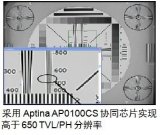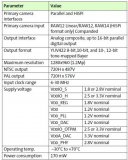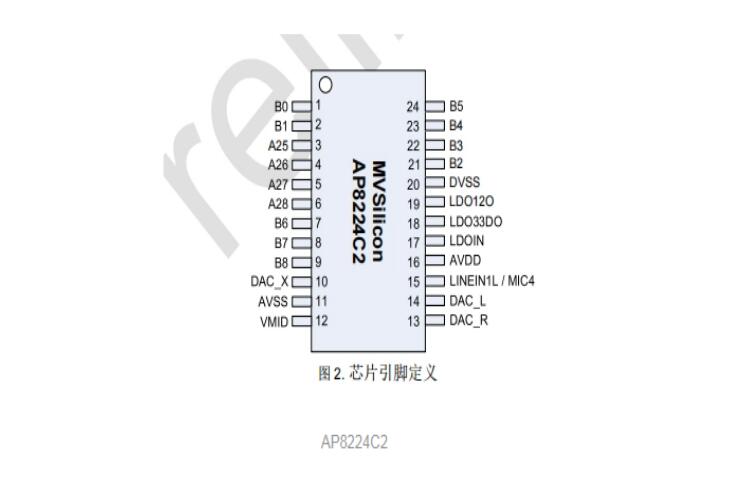Aptina的AP0100CS可与其市场领先的低光照CMOS传感器产品结合,创建具有高分辨率和标准动态范围(SDR)或宽动态范围(WDR)的CCTV相机解决方案。AP0100CS集成了Aptina的先进图像处理管道(pipeline),具有令人惊叹的视频和低光照性能。借助用于宽动态范围图像再现(rendering)的高级局部色调映射(Advanced Local Tone Mapping, ALTM)功能,即使在非常困难的高对比度照明条件下也能够生成高质量的视频。AP0100CS集成了具有高级转换器功能的NTSC/PAL编码器,可以提供模拟CCTV市场所需的高TV线分辨率。这款产品为中国市场设计人员提供了过去无法获取全新相机设计方案;也就是说,能够利用高端IP相机传感器的高分辨率、内在的卓越低光照性能及WDR能力,移植应用于模拟CCTV监控领域。这种强大的设计灵活性将会带来令人激动的新型监控摄像机。
Auto Exposure(自动曝光)
The auto exposure algorithm optimizes scene exposure to minimize clipping and saturation in critical areas of the image. This is achieved by controlling exposure time and analog gains of the external sensor as well as digital gains applied to the image. Auto exposure is implemented by a firmware algorithm that is running on the embedded microcontroller that analyzes image statistics collected by the exposure measurement engine, makes a decision, and programs the sensor and color pipeline to achieve the desired exposure. The measurement engine subdivides the image into 25 windows organized as a 5 x 5 grid.
Figure 16: 5 x 5 Grid
AE Track Driver
Other algorithm features include the rejection of fast fluctuations in illumination (time averaging), control of speed of response, and control of the sensitivity to small changes.
While the default settings are adequate in most situations, the user can program target brightness, measurement window, and other parameters described above.The driver changes AE parameters (integration time, gains, and so on) to drive scene brightness to the programmable target.
To avoid unwanted reaction of AE on small fluctuations of scene brightness or momentary scene changes, the AE track driver uses a temporal filter for luma and a threshold around the AE luma target. The driver changes AE parameters only if the filtered luma is larger than the AE target step and pushes the luma beyond the threshold.
Auto White Balance(自动白平衡)
The AP0100CS has a built-in AWB algorithm designed to compensate for the effects of changing spectra of the scene illumination on the quality of the color rendition. The algorithm consists of two major parts: a measurement engine performing statistical analysis of the image and a driver performing the selection of the optimal color correction matrix and IFP digital gain. While default settings of these algorithms are adequate in most situations, the user can reprogram base color correction matrices, place limits on color channel gains, and control the speed of both matrix and gain adjustments. The AP0100 CSAWB displays the current AWB position in color temperature, the range of which will be defined when programming the CCM matrixes.The region of interest can be controlled through the combination of an inclusion window and an exclusion window.
曝光和白平衡设定
The Sensor Manager firmware component is responsible for controlling the application of 'exposure' and 'white balance' within the system. This effectively means that all control of integration times and gains (whether for exposure or white balance) is delegated to the Sensor Manager. The Auto Exposure (AE) and Auto White Balance (AWB) algorithms use services provided by the Sensor Manager to apply exposure and/or white balance changes.
曝光和白平衡模式
The AP0100CS supports auto and manual exposure and white balance modes. In addition, it will operate within synchronized multi-camera systems. In this use case, one camera within the system will be the 'master', and the others 'slaves'. The master is used to calculate the appropriate exposure and white balance. This is then applied to all slaves concurrently under host control.
自动模式
In Auto Exposure mode the AE algorithm is responsible for calculating the appropriate exposure to keep the desired scene brightness, and for applying the exposure to the underlying hardware. In Auto White Balance mode the AWB algorithm is responsible for calculating the color temperature of the scene and applying the appropriate red and blue gains to compensate.
触发自动模式
The Triggered Auto Exposure and Triggered Auto White Balance modes are intended for the multi-camera use cases, where a host is controlling the exposure and white balance of a number of cameras. The idea is that one camera is in triggered-auto mode (the master), and the others in host-controlled mode (slaves). The master camera must calculate the exposure and gains, the host then copies this to the slaves, and all changes are then applied at the same time.
 电子发烧友App
电子发烧友App





























评论